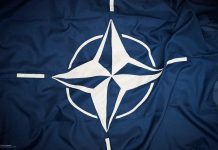
Turkey, a significant NATO player, has been actively working to enhance its fleet of fighter jets. The American F-16 has been a primary target in this endeavor. However, the fluctuating dynamics between Turkey and the United States have led to disagreements over Turkey’s procurement plans, leaving Turkey in a difficult position, especially concerning NATO expansion.
In response, Turkey has attempted to forge alliances with European nations, hoping to acquire Typhoon fighter jets. However, these efforts were met with staunch opposition from Germany.
In light of these developments, there are reports that Turkey is contemplating the acquisition of the JF-17 Thunder fighter jet, a joint venture between China and Pakistan. This jet is also referred to as the Fierce Dragon by China.
If Turkey decides to pursue this path, the latest model of the FC-1 Fierce Dragon, version 3.0, appears to be the most viable option. It’s important to note that this jet falls under the 4++ generation fighter category.
Observers of international affairs are acutely aware of the unique role Turkey, a key NATO member, plays. The past few years have seen strained relations between Turkey and its NATO allies, particularly the United States.
The tension escalated when the U.S. expelled Turkey from the global F-35 stealth fighter cooperation initiative. This action was a direct response to Turkey’s decision to purchase the Russian S-400 anti-missile system.
Turkey did not take this decision lightly. Instead of retreating, it continued with its acquisition of S-400 missiles and further strengthened its alliance with Russia.
On the other side, the U.S., clearly unhappy, attempted to curb Turkey’s ambitions once more. This time, they pressured Turkey to reduce its demand for F-16V fighter jets.
In a surprising turn of events, Turkey has shown interest in acquiring Eurofighter Typhoon fighter jets from Europe. This move coincides with Turkey’s decision to obstruct Sweden’s potential induction into NATO.
Despite Turkey’s refusal to support Sweden’s membership, Finland, another NATO applicant, secured its membership over eight months ago. Consequently, Sweden’s prospective membership remains uncertain.
This decision has exacerbated the tension between Turkey and several key NATO countries, as evidenced by the ongoing delay in approving Turkey’s request to purchase US F-16V fighter jets.
Simultaneously, as Turkey considered procuring Europe’s Typhoon fighter jets, Germany remained resolute in its opposition.
Turkey’s Plan B: Typhoons
Reports indicate that Turkey plans to acquire 40 Typhoon fighter jets. However, this decision is met with resistance from Germany, leading to speculation that the United States may be influencing this opposition.
To provide context, the Typhoon combat aircraft project is a joint venture involving four nations – The United Kingdom, Germany, Italy, and Spain. Any sales to overseas customers necessitate a consensus among these countries.
So, what happens when this consensus is not achieved?
International media outlets suggest that Turkey might contemplate acquiring Russian Su-35 fighter jets as an alternative. However, such a move could further escalate the existing tension in the Turkey-US [NATO] relationship.
Moreover, integrating Russian jets with Turkey’s predominantly US-made military hardware presents technical challenges. This, along with the technological limitations of Russian-made jets, could lead to a significant cost.
In contrast, the latest version of the JF-17 Thunder, jointly developed by China and Pakistan, emerges as a feasible alternative. This aircraft is not only competitively priced but also exhibits excellent technical compatibility with Western electronic equipment.
Additionally, when equipped with active electronically scanned array [AESA] radars and PL-10 air-to-air missiles, the JF-17 Thunder delivers a combat performance comparable to Western 4++ generation fighters.
Dance with the Dragon
If Turkey succeeds in acquiring 40 FC-1 Fierce Dragon version 3.0, it would not only mark the first instance of a Chinese-designed fighter entering a significant NATO country but also represent a substantial and high-value transaction.
Several analysts have highlighted a common memory among many Chinese about the HQ-9 missile incident that occurred around a decade ago. During that time, Turkey used the acquisition of the HQ-9 as a negotiation lever, playing the ‘China card’ to procure a Patriot missile from the United States.
Recent media reports indicate that Turkey might revert to its previous strategy, using the FC-1 Fierce Dragon version 3.0 as leverage to persuade the United States and Europe to facilitate fighter jet weapons sales.
However, it’s worth noting that the FC-1 Fierce Dragon version 3.0 falls short when compared to the J-10CE, let alone the F-16V fighter and the Typhoon fighter. Therefore, the prospect of transferring these to Turkey could potentially lead to another predicament.
Strategic Deception?
Industry insiders largely agree that Turkey’s announcement expressing potential interest in purchasing Chinese fighter jets is likely a strategic move to pressure the United States into making concessions.
Assuming Turkey continues its engagement with NATO after a period of diplomatic negotiations, the general consensus is that Turkey will eventually approve Sweden’s entry into NATO, and the United States will proceed with the sale of F-16V fighter jets to Turkey.




